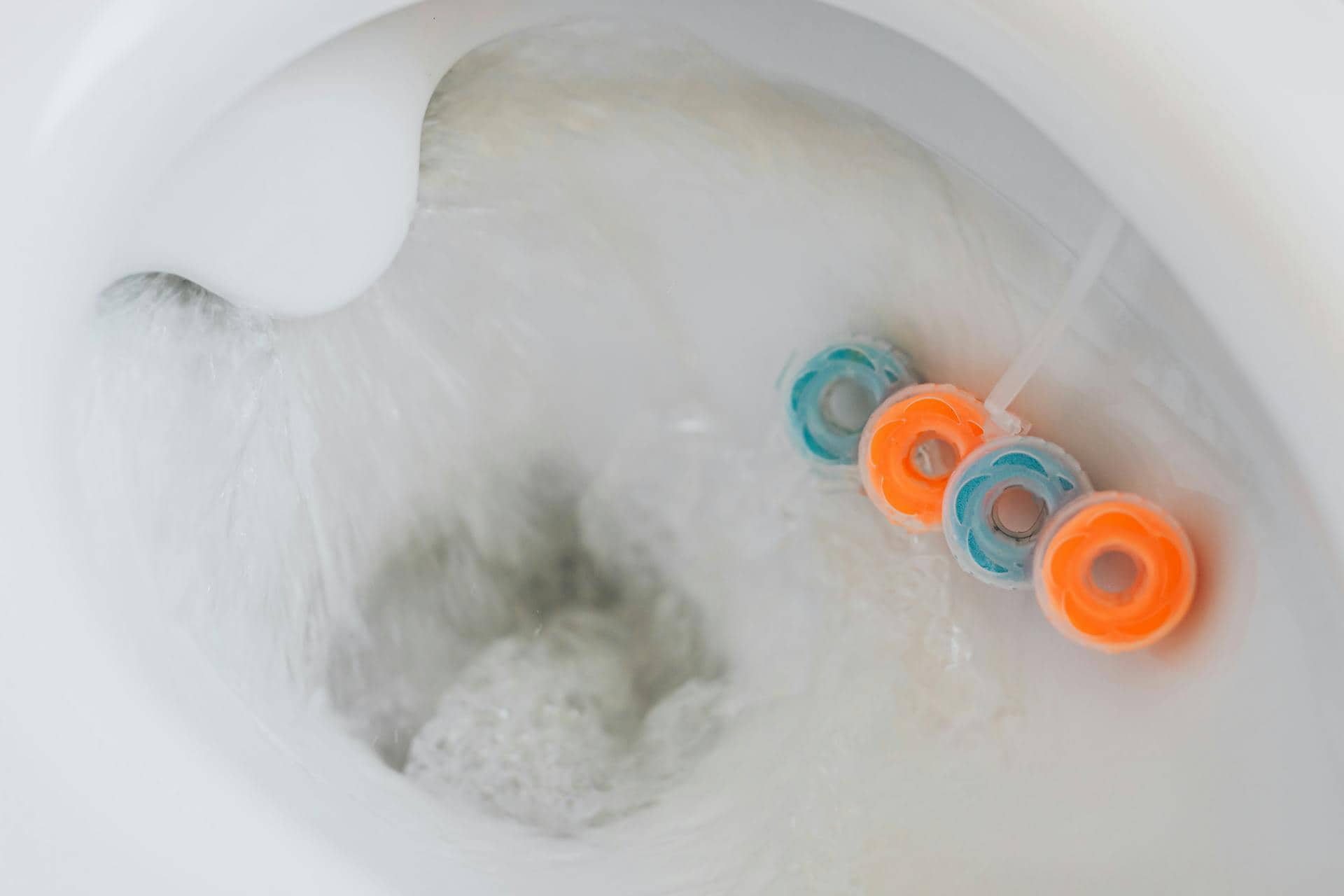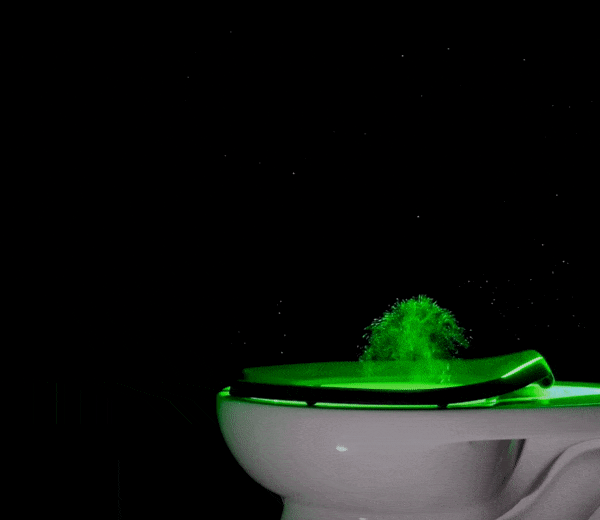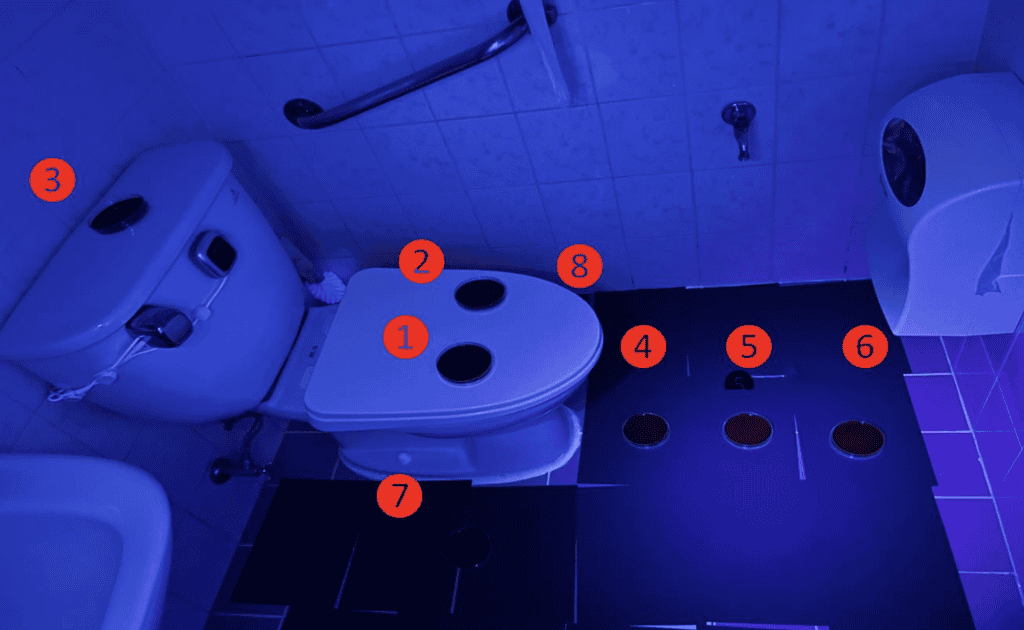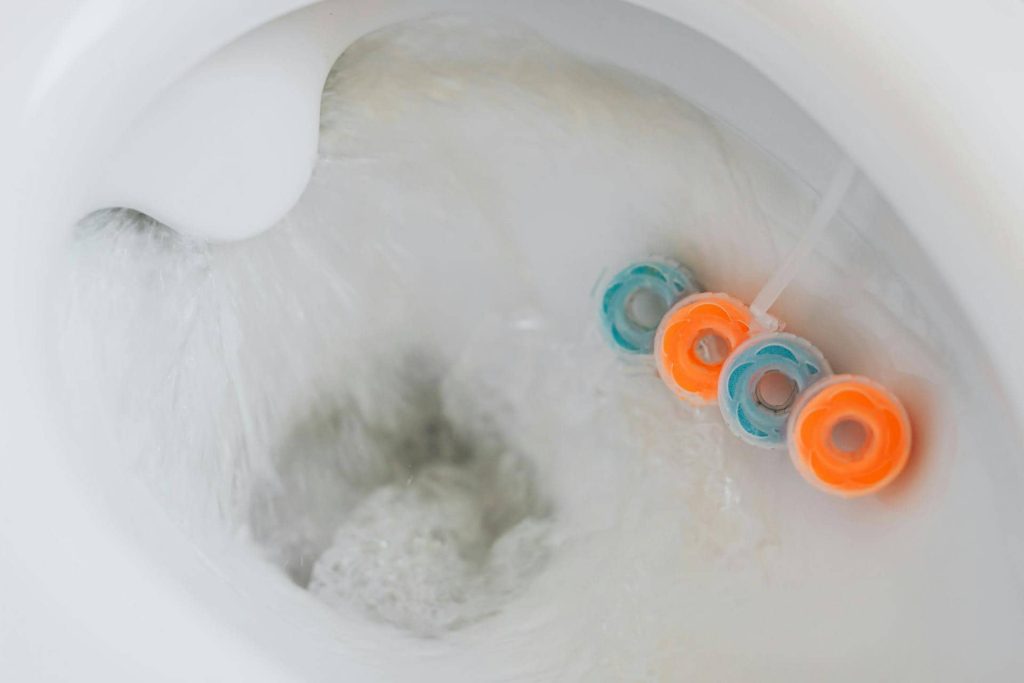
For many couples, one of the most annoying parts of their relationship involves the toilet seat. Women prefer it down, men eventually give in but then 'forget' about it by the next flush, leading to arguments.
Let's put the seat aside for a moment. Here is some toilet etiquette that may satisfy both sides and settle the debate once and for all: everyone should close the lid. This way, everyone in the household does an equal amount of lifting up and down. Additionally, maybe the most important reason we should all keep the lid down after using the toilet is for hygiene purposes.
A recent study in South Korea discovered that an open toilet during flushing can spread at least twice as many bacteria in its area than one with the lid closed.
What is released when you flush
When we flush a toilet, it's more than just waste being flushed away. It's a launching pad that sends tiny particles into the air, some potentially carrying disease-causing pathogens. In 2022, researchers at the University of Colorado Boulder set out to shed light — quite literally — on this unseen threat.

They used green laser beams to light up the aerosol cloud produced by a flushing toilet, showing how particles from the toilet bowl can become airborne and potentially pose a health risk to individuals in public restrooms. The results are surprising: particles expelled during a flush can reach speeds of up to 6.6 feet per second and rise to nearly 5 feet above the ground in just seconds.
Moreover, particles smaller than 5 microns can linger in the air for over a minute, traveling in various directions, including upwards and along walls, potentially spreading pathogens far from their origin. These findings were similar to an earlier 2020 study from China that utilized a computer model to demonstrate how water from a flushed toilet can spray particles as high as three feet.
“If it’s something you can’t see, it’s easy to pretend it doesn’t exist. But once you see these videos, you’re never going to think about a toilet flush the same way again,” said John Crimaldi, lead author of the study and professor of civil, environmental, and architectural engineering at the University of Colorado Boulder.
“The goal of the toilet is to effectively remove waste from the bowl, but it’s also doing the opposite, which is spraying a lot of contents upwards,” he added.
An automatic lid-down toilet

Researchers at the Asan Medical Center, a large hospital in Seoul, South Korea, developed an automated toilet flushing system that operates only when the toilet lid is closed. This was out of concern that droplets from flushing systems — containing urine, feces, and infectious microorganisms — could endanger the patients using the public restrooms of the hospital. Human feces can harbor disease-causing bacteria like E. coli, Staphylococcus, and Campylobacter, and hospital toilets are particularly vulnerable points for the transmission of these pathogens.
To assess the effectiveness of this device in reducing surface contamination in bathrooms, the researchers conducted a comparative analysis between toilets equipped with the device and those without it. The study involved eight patient bathrooms — four with and four without the automatic flushing device.
To check for contamination, the scientists put eight blood agar plates around the toilet in each bathroom. These plates were carefully placed all around the toilet to capture bacterial particles that are spread when the toilet is flushed. After flushing the toilets once without feces or urine, airborne particles were allowed to settle on the plates for 90 minutes. They were then collected and placed in a warm place to allow visible bacterial colonies to grow for two days.
The advantages of closed lids
The findings were convincing, indicating a significant decrease in bacterial contamination on surfaces near toilets with the automatic flushing device. On average, surfaces around these toilets had less than half the number of bacterial colonies compared to those without the device (6 vs 14 colonies).
“Our study underscores the importance of closing the lid before flushing and fitting automatic flushing devices to reduce the contamination of bathroom surfaces”, says lead author Jihye Park from the Asan Medical Center.
“We are now going to install automatic flushing devices in all hospital bathrooms along with automatic UV disinfection to reduce the spread of infections.”
The research has not been published in a peer-reviewed journal yet. It was recently presented at this year’s European Congress of Clinical Microbiology and Infectious Diseases (ECCMID 2024) in Barcelona, Spain.









